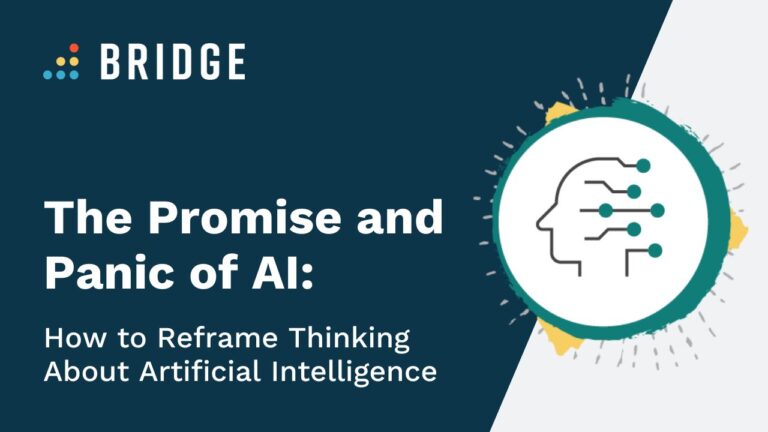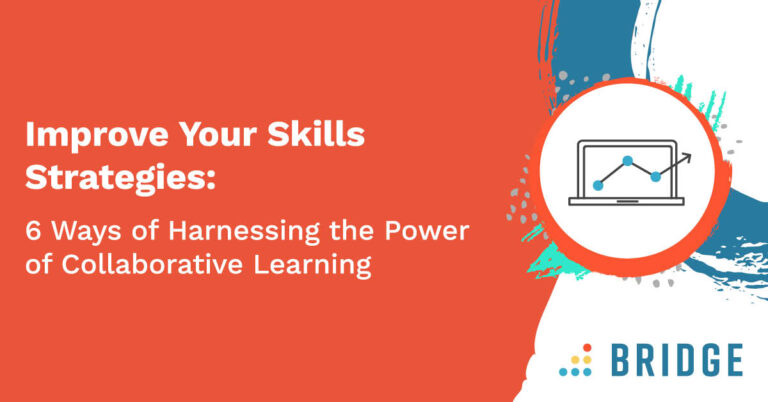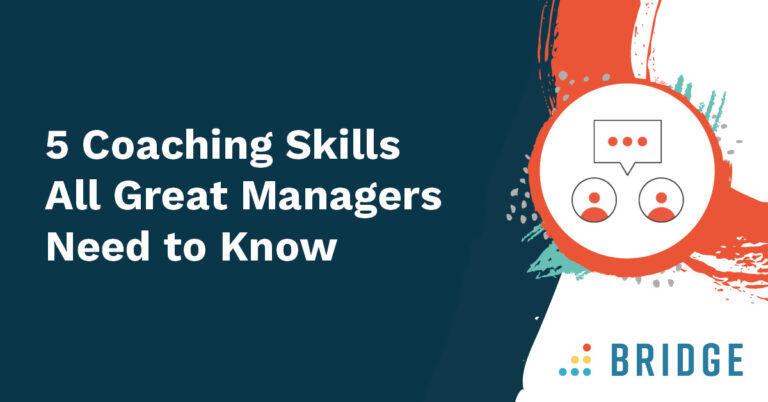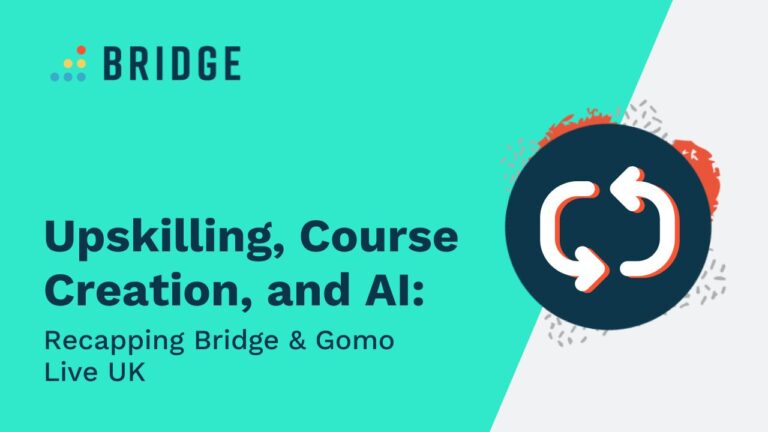Workers across several industries are concerned about the implications of AI advances for their job security. This is an understandable reaction to new and potentially disruptive technology, but looking at the issue through the lens of learning and development can make AI seem a little less scary. Let’s reflect on how we got here—and how L&D use cases can help us look at AI’s ongoing impact in a slightly different light.
In May 2022, PwC’s Global Workforce Hopes and Fears Survey found that 30% of respondents were worried about their job role being replaced by technology within three years. This isn’t a huge figure, but it’s one that underscores the rapidity of technological change—because months after PwC’s research was published, ChatGPT and its generative AI cousins burst onto the scene and demanded a reassessment of our tech-related concerns. And, sure enough, this leap in technological achievement was matched by a corresponding increase in worry. In fact, 65% of US adults described themselves as concerned that AI advances could lead to job losses in a survey published just a year on from PwC’s 2022 investigation.
It goes without saying that business and HR leaders will benefit from offering a little reassurance to their fretting workforces. Academic studies tend to agree that stress and similar forms of poor mental health lower productivity, which isn’t exactly the best way to usher in a new age of AI-powered efficiency!
By thinking about AI from an L&D perspective, it becomes much easier to reconcile AI developments with a sunny outlook for employee career prospects. In the L&D space, AI isn’t just a way to enhance productivity: it’s a force for promoting your workers’ skill development. As such, leveraging AI in the context of L&D demonstrates that AI doesn’t have to be seen as a threat to jobs—in fact, it offers exciting new ways to provide your people with stability, growth, and career prospects within your organization.
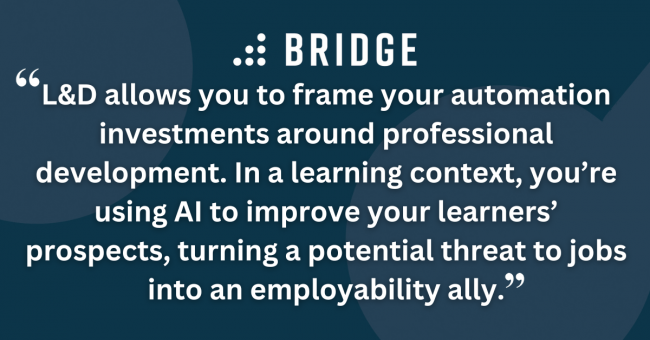
How to Use AI in L&D
One way to think about the role of AI in L&D is to focus on efficiency. Like every field that’s taking a keen interest in AI, the L&D world has plenty of uses for a technology that can automate administrative tasks and supercharge the creation of content. Unlike every field, however, L&D allows you to frame your automation investments around professional development.
In a learning context, you’re using AI to improve your learners’ prospects, turning a potential threat to jobs into an employability ally. For example, you can use AI to tag learning courses with skills and recommend courses in line with your workers’ individual upskilling needs. This undoubtedly eliminates tasks that might form part of a human employee’s role, but it’s a process that results in a more capable and upskilled workforce—one that can face an uncertain future with the confidence that comes with a culture of constant improvement.
While automation might be the hallmark of efficiency-boosting AI, that doesn’t mean AI-powered L&D is a cold world of machines upskilling isolated individuals. AI can bring together communities of employees based on the skills they want to learn and pair your people with mentors willing to share their expertise. As such, your people won’t just insulate themselves from any perceived threat of AI replacements—they’ll also forge human connections in the process.
These reassuring new competencies and deeper interpersonal relationships are all made possible through AI interventions. In that sense, the role of AI in L&D isn’t just to improve the learning experience or cut down on admin, but to offer a far less scary vision of what AI means in the workforce. It’s not a replacement for your people, but a way to make your people irreplaceable.
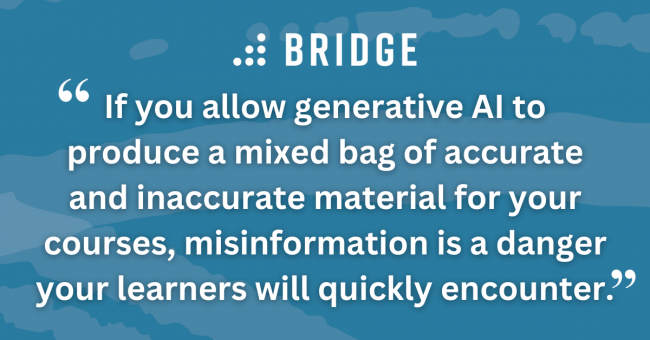
RELATED READING | ‘How AI Can Power Talent Management’
The Limitations of AI in L&D
Human connection via mentorship and skills communities isn’t just a pleasant use case for AI—it’s also a clear reminder of AI’s limitations. No matter how skillfully generative AI can produce eLearning course ideas and cataloguing, no AI tool can effectively replicate the advantages of learning alongside real human beings, whether that’s through improvements to learner confidence or via the expertise a good mentor figure will bring to the table.
Speaking of expertise, there’s never a bad time to highlight the other big drawback of using generative AI to power your learning content: it doesn’t necessarily know what it’s talking about. Generative AI is prone to a form of inaccuracy that has been dubbed ‘hallucinations.’ McKinsey has a great definition of AI hallucinations: they’re assertions that are “plausible but untrue.”
It’s never a good idea to rely on made-up claims in any professional setting, but this problem takes on an extra flavor of urgency in the world of instructional design and content authoring. If you allow generative AI to produce a mixed bag of accurate and inaccurate information for your courses, misinformation is a danger your learners will quickly encounter.
That doesn’t mean you shouldn’t consider using generative AI to help create course ideas, but it does mean that a human hand needs to remain firmly on the wheel if you navigate this exciting new phase of eLearning content creation. Making that observation clear to your L&D team will go a long way toward assuaging any concerns about the robot takeover!
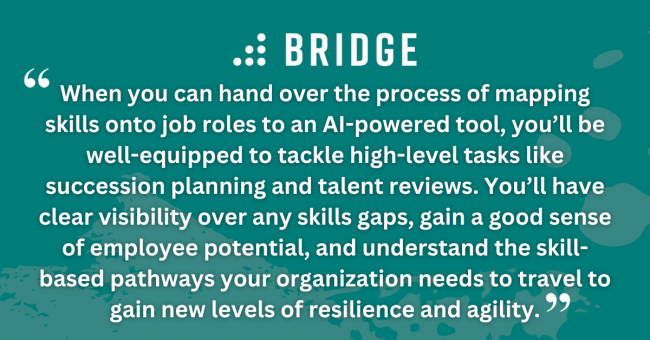
MORE ABOUT MENTORING | ‘How Org Charts Can Help Workplace Mentorship Programs’
How AI Gives L&D Leaders More Time to Focus on High-Value Tasks
While your more junior colleagues may benefit from a little AI-related reassurance, AI can also have a big impact on L&D tasks and strategies at the leadership level.
Let’s return to the subject of skill identification, for example. We’ve already established that an AI tool can:
- Work out which skills your people need to develop in accordance with their job roles
- Tie in skills to wider industry requirements (a project manager in a software development organization will need different skills to a project manager in construction)
- Push automated recommendations for courses that allow employees to nurture those skills
Automating the skills tagging process that underpins skill identification saves a lot of effort for your admins—but it has similar time-smart implications for L&D leaders, too.
When you can hand over the process of mapping skills onto job roles to an AI-powered tool, you’ll be well-equipped to tackle high-level tasks like succession planning and talent reviews. You’ll have clear visibility over any skills gaps, gain a good sense of employee potential, and understand the skill-based pathways your organization needs to travel to gain new levels of resilience and agility. Again, this is a task that requires the instincts and insights of an L&D leader—but a little AI intervention will unquestionably grease your strategic wheels.
INTERESTED IN TALENT REVIEWS? READ ON | ‘Rethinking the 9 Box Talent Review’
Get AI-Powered Tooling That Puts People First With Bridge
Bridge’s Skills Plus platform can add an AI component to your L&D programs with automated skills tagging, learning recommendations, learning communities, and more. Contact us today for more information.
